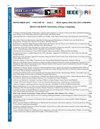目标导向环境下自动驾驶汽车的自适应导航系统
IF 1.3
4区 工程技术
Q3 COMPUTER SCIENCE, INFORMATION SYSTEMS
引用次数: 0
摘要
在自主导航的背景下,开发能够使车辆在受控环境中独立运行的系统是推进自主技术的关键一步。这项工作介绍了使用增强拓扑神经进化(NEAT)的自动驾驶汽车导航系统的设计、实现和验证。我们的主要目标是创造一种能够在2D地图上导航的车辆,并带有明确的起点和目标。虚拟传感器使车辆能够识别可导航的路径和边界。距离度量如欧几里得、曼哈顿和切比雪夫被用作奖励系统,不断计算代理位置。车辆越接近目标,其适应度得分越高,形成适应度函数的基础。设计并实现了一种强制强化加速方法,以保证车辆在车速低于0.1时仍能前进,防止车辆失速。进行了验证测试,以评估系统在不同条件下的性能。结果表明,自动驾驶汽车可以有效地导航地图,并根据所使用的距离度量提高其每一代的适应度分数。切比雪夫在无障碍环境中表现最好,而欧几里得在有障碍的环境中表现出色。强制强化方法显著减少了达到目标适应度所需的时间。这些发现为旨在开发基于neat的自动驾驶汽车导航系统的研究人员提供了有价值的见解。本文章由计算机程序翻译,如有差异,请以英文原文为准。
Adaptive Navigation System for an Autonomous Vehicle in a Goal-Oriented Environment
In the context of autonomous navigation, the development of systems that enable vehicles to operate independently in controlled environments is a crucial step toward advancing autonomous technology. This work presents the design, implementation, and validation of a navigation system for autonomous vehicles using NeuroEvolution of Augmenting Topologies (NEAT). The primary objective was to create a vehicle capable of navigating a 2D map with a defined starting point and target. Virtual sensors enable the vehicle to identify navigable paths and boundaries. Distance metrics such as Euclidean, Manhattan, and Chebyshev were employed as reward systems, continuously calculating agent positions. The closer the vehicle is to the target, the higher its fitness score, forming the basis of the fitness function. A forced reinforcement acceleration method was designed and implemented to ensure progress when the vehicle's speed fell below 0.1, preventing it from becoming stalled. Validation tests were conducted to evaluate the system's performance under varying conditions. Results demonstrate that the autonomous vehicle can navigate the map effectively, improving its fitness score in each generation depending on the distance metric used. Chebyshev performed best in obstacle-free environments, while Euclidean excelled in the presence of obstacles. The forced reinforcement method significantly reduced the time required to achieve the target fitness. These findings provide valuable insights for researchers aiming to develop NEAT-based navigation systems for autonomous vehicles.
求助全文
通过发布文献求助,成功后即可免费获取论文全文。
去求助
来源期刊

IEEE Latin America Transactions
COMPUTER SCIENCE, INFORMATION SYSTEMS-ENGINEERING, ELECTRICAL & ELECTRONIC
CiteScore
3.50
自引率
7.70%
发文量
192
审稿时长
3-8 weeks
期刊介绍:
IEEE Latin America Transactions (IEEE LATAM) is an interdisciplinary journal focused on the dissemination of original and quality research papers / review articles in Spanish and Portuguese of emerging topics in three main areas: Computing, Electric Energy and Electronics. Some of the sub-areas of the journal are, but not limited to: Automatic control, communications, instrumentation, artificial intelligence, power and industrial electronics, fault diagnosis and detection, transportation electrification, internet of things, electrical machines, circuits and systems, biomedicine and biomedical / haptic applications, secure communications, robotics, sensors and actuators, computer networks, smart grids, among others.
 求助内容:
求助内容: 应助结果提醒方式:
应助结果提醒方式:


